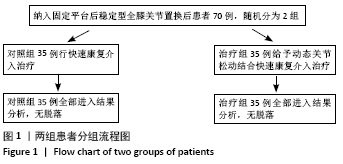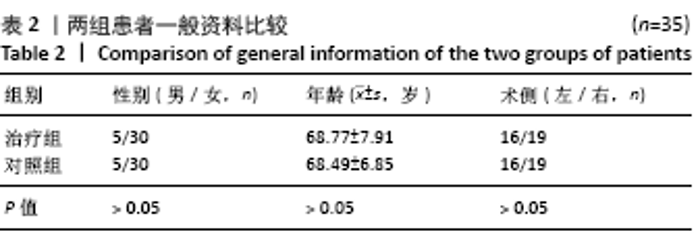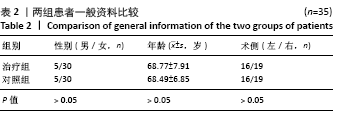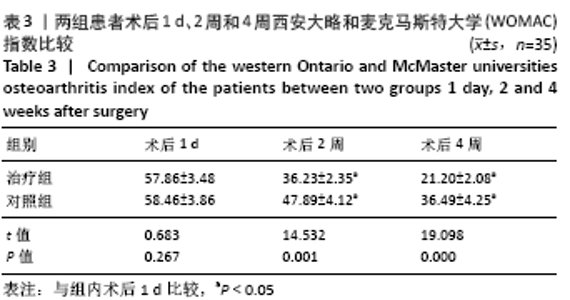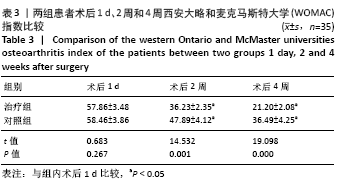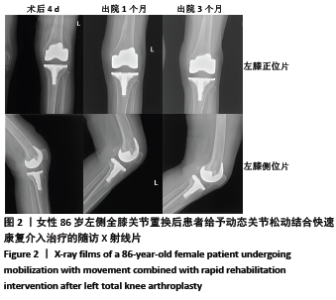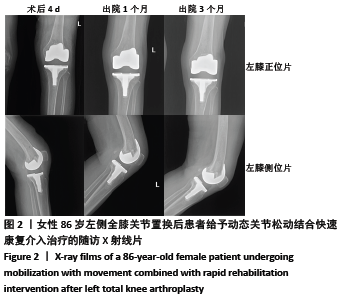| [1] |
Jiang Yong, Luo Yi, Ding Yongli, Zhou Yong, Min Li, Tang Fan, Zhang Wenli, Duan Hong, Tu Chongqi.
Von Mises stress on the influence of pelvic stability by precise sacral resection and clinical validation
[J]. Chinese Journal of Tissue Engineering Research, 2021, 25(9): 1318-1323.
|
| [2] |
Zhang Yu, Tian Shaoqi, Zeng Guobo, Hu Chuan.
Risk factors for myocardial infarction following primary total joint arthroplasty
[J]. Chinese Journal of Tissue Engineering Research, 2021, 25(9): 1340-1345.
|
| [3] |
Li Dadi, Zhu Liang, Zheng Li, Zhao Fengchao.
Correlation of total knee arthroplasty efficacy with satisfaction and personality characteristics
[J]. Chinese Journal of Tissue Engineering Research, 2021, 25(9): 1346-1350.
|
| [4] |
Wei Wei, Li Jian, Huang Linhai, Lan Mindong, Lu Xianwei, Huang Shaodong.
Factors affecting fall fear in the first movement of elderly patients after total knee or hip arthroplasty
[J]. Chinese Journal of Tissue Engineering Research, 2021, 25(9): 1351-1355.
|
| [5] |
Wang Jinjun, Deng Zengfa, Liu Kang, He Zhiyong, Yu Xinping, Liang Jianji, Li Chen, Guo Zhouyang.
Hemostatic effect and safety of intravenous drip of tranexamic acid combined with topical application of cocktail containing tranexamic acid in total knee arthroplasty
[J]. Chinese Journal of Tissue Engineering Research, 2021, 25(9): 1356-1361.
|
| [6] |
Peng Zhihao, Feng Zongquan, Zou Yonggen, Niu Guoqing, Wu Feng.
Relationship of lower limb force line and the progression of lateral compartment arthritis after unicompartmental knee arthroplasty with mobile bearing
[J]. Chinese Journal of Tissue Engineering Research, 2021, 25(9): 1368-1374.
|
| [7] |
Zhang Shangpu, Ju Xiaodong, Song Hengyi, Dong Zhi, Wang Chen, Sun Guodong.
Arthroscopic suture bridge technique with suture anchor in the treatment of acromioclavicular dislocation
[J]. Chinese Journal of Tissue Engineering Research, 2021, 25(9): 1417-1422.
|
| [8] |
Yuan Jiawei, Zhang Haitao, Jie Ke, Cao Houran, Zeng Yirong.
Underlying targets and mechanism of Taohong Siwu Decoction in prosthetic joint infection on network pharmacology
[J]. Chinese Journal of Tissue Engineering Research, 2021, 25(9): 1428-1433.
|
| [9] |
Chen Junming, Yue Chen, He Peilin, Zhang Juntao, Sun Moyuan, Liu Youwen.
Hip arthroplasty versus proximal femoral nail antirotation for intertrochanteric fractures in older adults: a meta-analysis
[J]. Chinese Journal of Tissue Engineering Research, 2021, 25(9): 1452-1457.
|
| [10] |
Huang Dengcheng, Wang Zhike, Cao Xuewei.
Comparison of the short-term efficacy of extracorporeal shock wave therapy for middle-aged and elderly knee osteoarthritis: a meta-analysis
[J]. Chinese Journal of Tissue Engineering Research, 2021, 25(9): 1471-1476.
|
| [11] |
Liu Yafei, Wang Yalin, Zuo Yanping, Sun Qi, Wei Jing, Zhao Lixia.
Structural changes of the temporomandibular joint in adolescents with skeletal Class III malocclusions after maxillary protraction: an X-ray measurement analysis
[J]. Chinese Journal of Tissue Engineering Research, 2021, 25(8): 1154-1159.
|
| [12] |
Wu Xun, Meng Juanhong, Zhang Jianyun, Wang Liang.
Concentrated growth factors in the repair of a full-thickness condylar cartilage defect in a rabbit
[J]. Chinese Journal of Tissue Engineering Research, 2021, 25(8): 1166-1171.
|
| [13] |
Geng Qiudong, Ge Haiya, Wang Heming, Li Nan.
Role and mechanism of Guilu Erxianjiao in treatment of osteoarthritis based on network pharmacology
[J]. Chinese Journal of Tissue Engineering Research, 2021, 25(8): 1229-1236.
|
| [14] |
Zhong Hehe, Sun Pengpeng, Sang Peng, Wu Shuhong, Liu Yi.
Evaluation of knee stability after simulated reconstruction of the core ligament of the posterolateral complex
[J]. Chinese Journal of Tissue Engineering Research, 2021, 25(6): 821-825.
|
| [15] |
Zhao Zhongyi, Li Yongzhen, Chen Feng, Ji Aiyu.
Comparison of total knee arthroplasty and unicompartmental knee arthroplasty in treatment of traumatic osteoarthritis
[J]. Chinese Journal of Tissue Engineering Research, 2021, 25(6): 854-859.
|

